About a vegetable colour green on the medieval palette
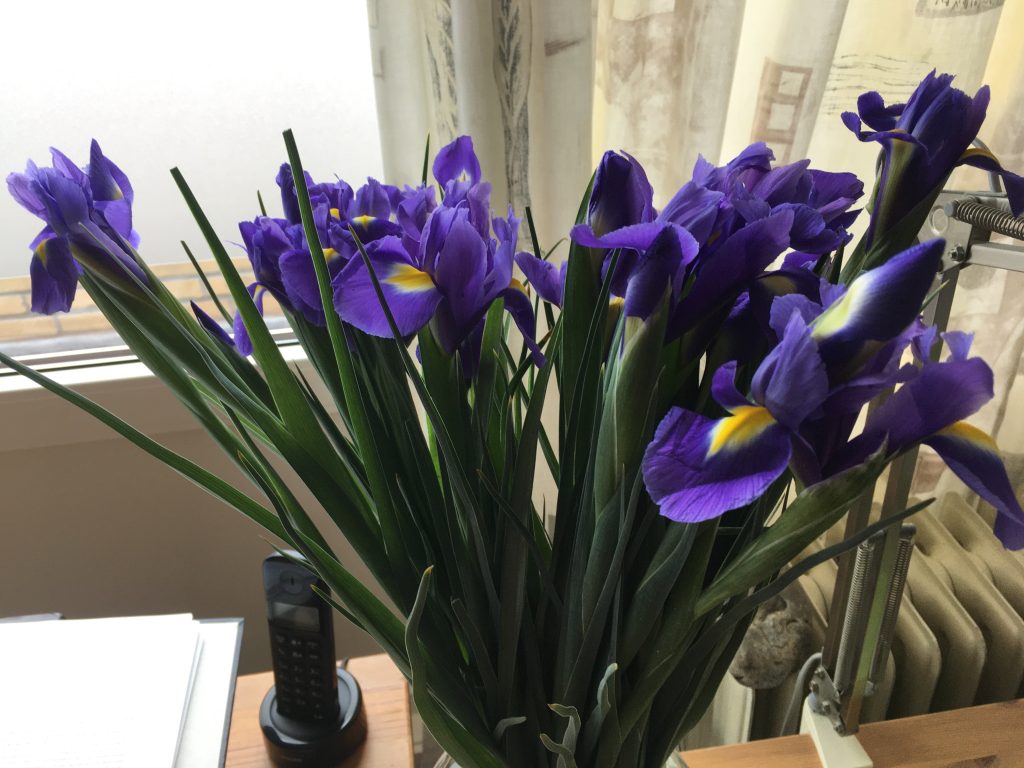
Most of you know them, blue irises, beautiful flowers with a yellow interior. You come across them loose in bouquets or as a bunch in the vase. The blue-purplish juice squeezed from the flowers of iris germanica was mixed with alum to make a green used in manuscript illumination.
In this blog, I want to show how that was done. I have based myself on medieval sources such as “De Arte Illuminandi” and the Bologna Manuscript.
It has been a while since I cycled to the market in Rotterdam to buy two bunches of irises to make a green colour. I had just bought a book with a lot of unusual recipes: ‘Alchimie de l’enluminure’ by Marc Niederhauser. Marc Niederhauser was a journalist who lived in France and later studied illumination extensively. He also gave several workshops in an annex of the beautiful Chateau de Chantilly not far from Paris. As far as I know, the booklet with the recipes is only available in French.
It all fitted in with my growing interest at the time in vegetable colours on the medieval palette. On that late medieval palette, we see more and more colours appearing, quite a few of them vegetable. Both recipes and storage of those colours are very interesting to look at and to make yourself. In this post, we are going to discover how to make Iris green.
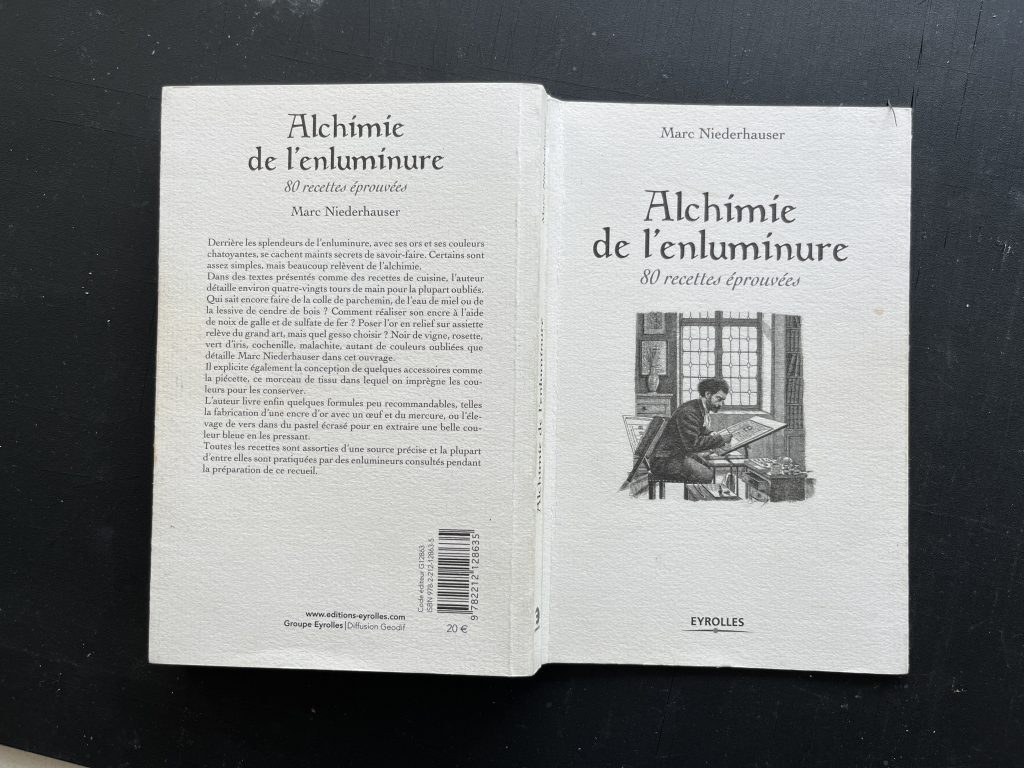
What do we need?
Petals of the Blue Iris
Lye made with wood ash (*) (See recipe at the bottom of this post.).
Alum
Gum arabic
Filtered rainwater or demineralised water
Dish/tray
Mortar and pestle
Wooden spoon
Pipette
Filter paper
Working method

Get a good amount of iris leaves in a bowl or container.
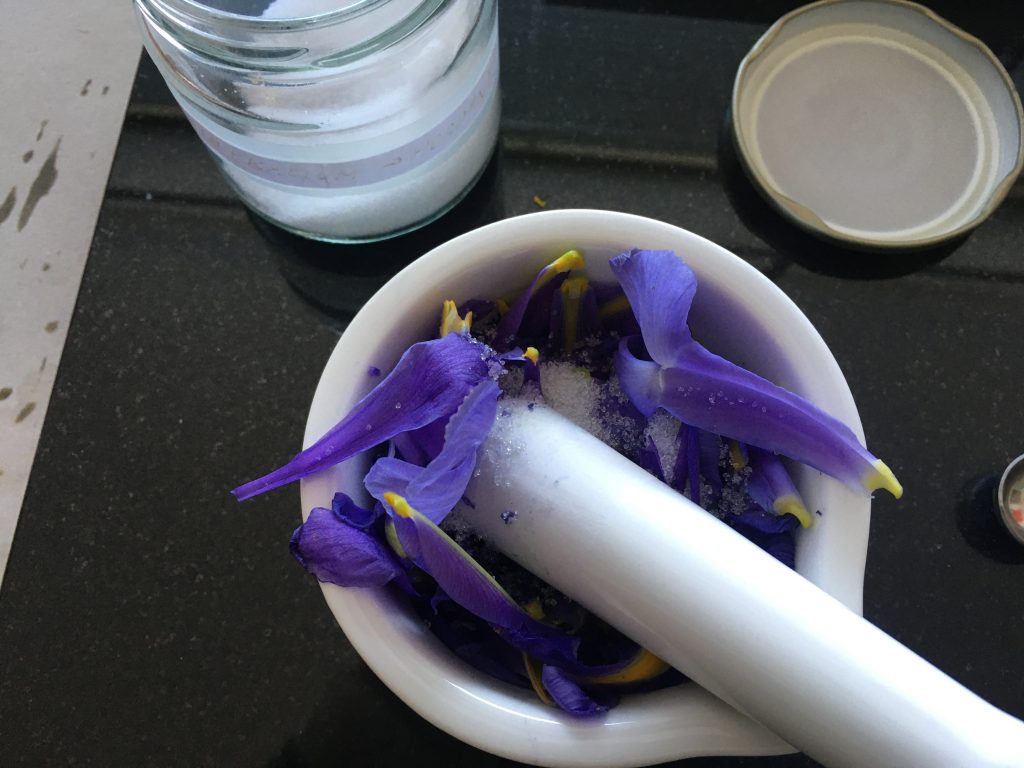
Crush the leaves, a large amount! Then we dissolve 2 grams of alum in some lukewarm water and 2 grams of gum arabic. We stir both solutions into the pounded leaves and let it soak in for 6 hours.
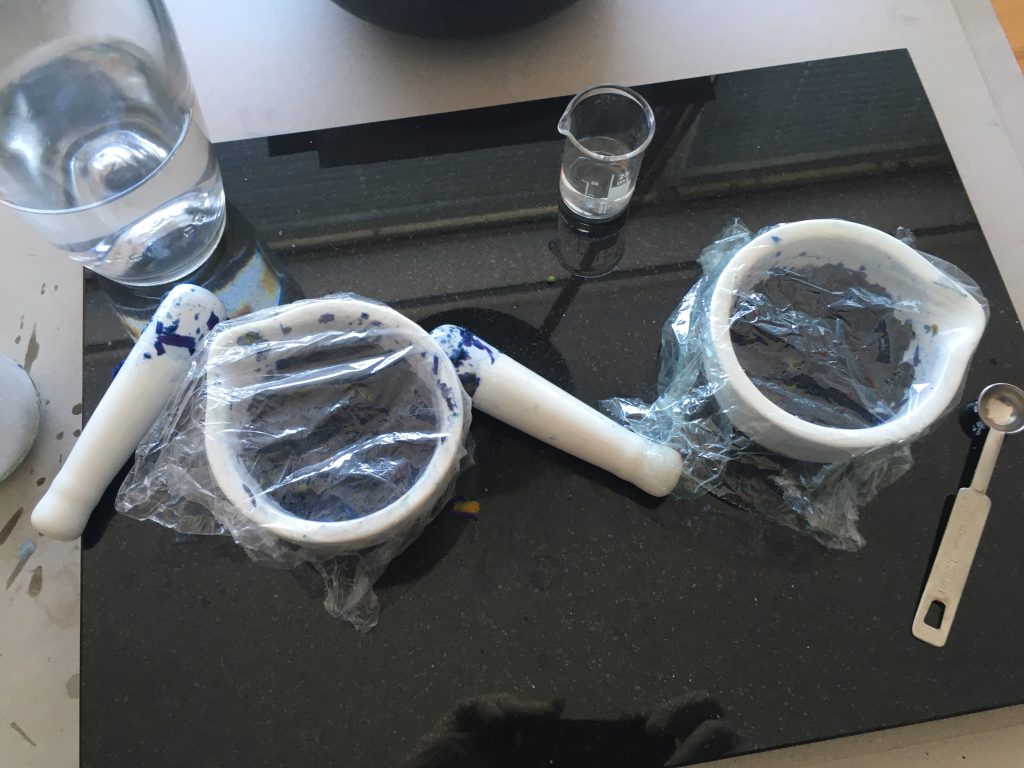
While waiting, I usually cover my brews to avoid evaporation and dust etc.
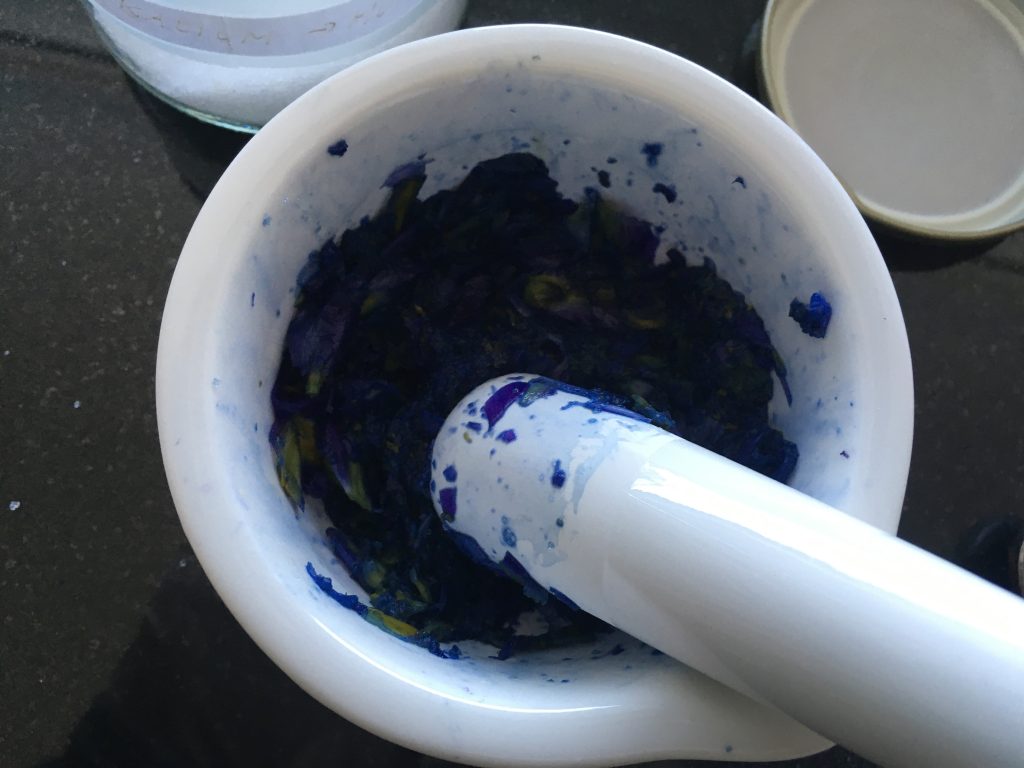
Meanwhile, in the mortar, the mass with alum and gum arabic has turned blue-purple. We will now sieve it with a sieve possibly additionally with filter paper. The idea is to squeeze all the moisture out of the mass through the sieve. You can add some lye now or later with a pipette to turn the colour green. I myself did it later. (See below).
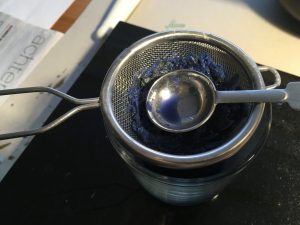

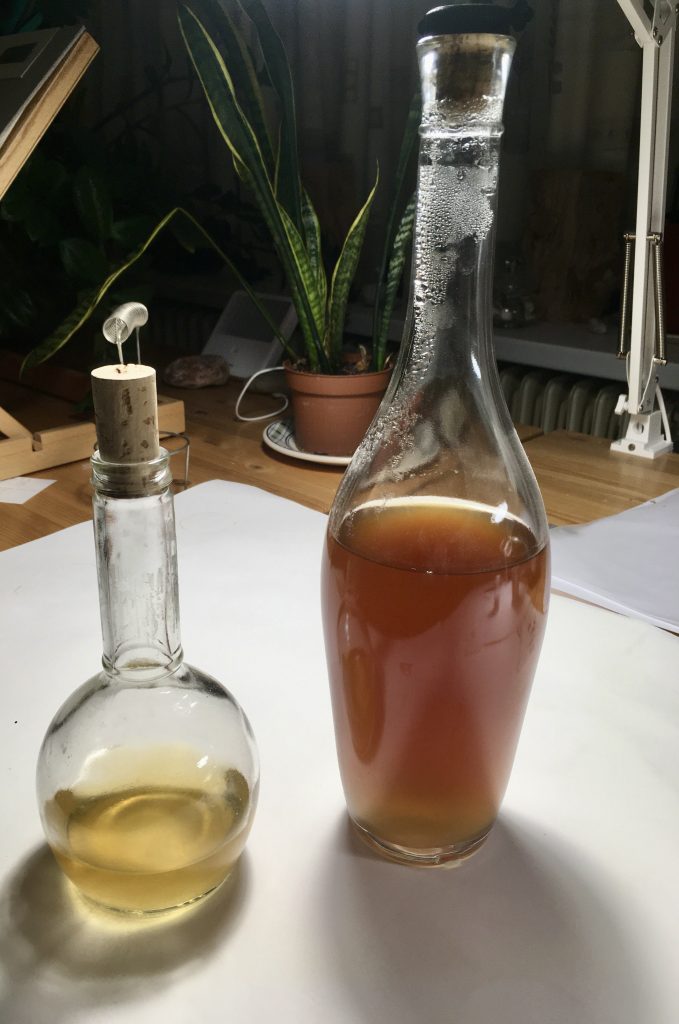
Lye solution made from wood ash.
Now comes the point of preserving these colours. In the Middle Ages, pieces of cloth were often used, which were dipped in the vegetable colours several times. After each time, the piece of cloth was dried and soaked in the liquid again after drying. In this way, a ‘stock’ of colour was created that could be used all year round, including in winter.
If the dyer wanted to use the colour he would cut off a piece of the colour-soaked fabric and put it in the clarea, (glair) or other binder which then slowly turned green. Our solution already contains some gum arabic, so clear water should suffice.
However, it is always advisable to make some trials and one thing we should never forget is that vegetable colours remain very sensitive to light. In manuscripts, they were reasonably well protected from light but for use for a piece of work framed behind glass, be careful.

To the blue sieved solution I added a few drops of wood lye and she was then coloured green. The small porcelain bowls are very handy for this.
For storage, I used small pieces of cotton. The green colour is a bit dark here, in use it will be slightly lighter. If necessary, you can make the colour a little warmer with Saffron. (See the images below).

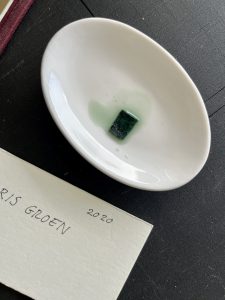
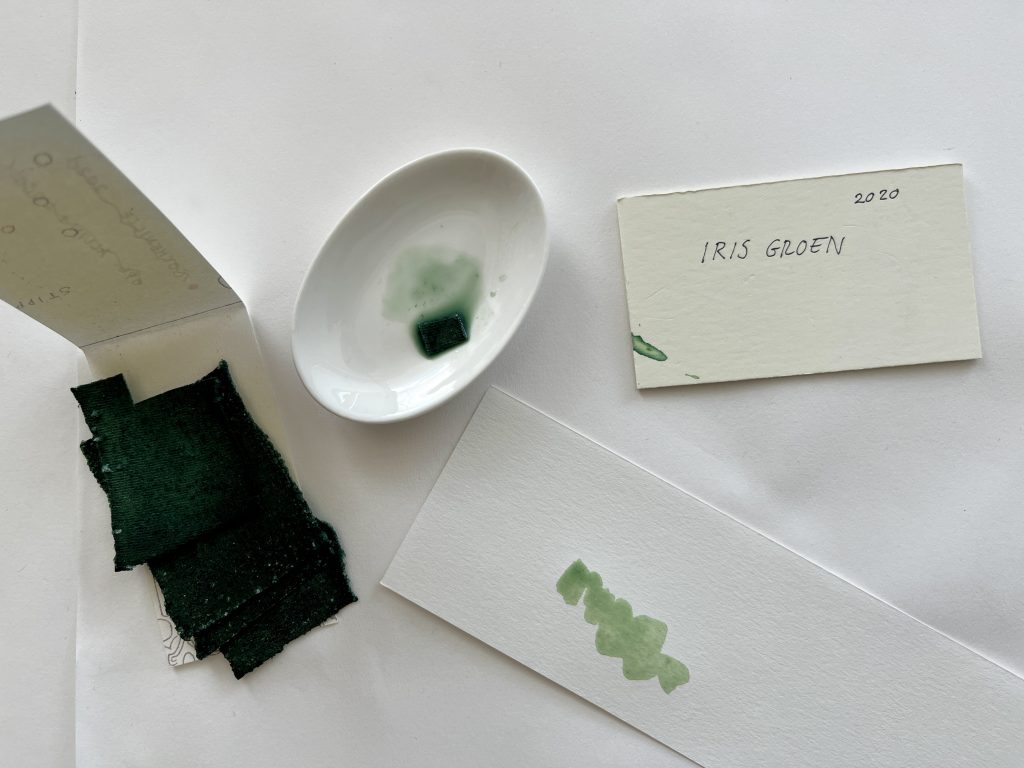

After adding some saffron, the colour becomes significantly lighter.
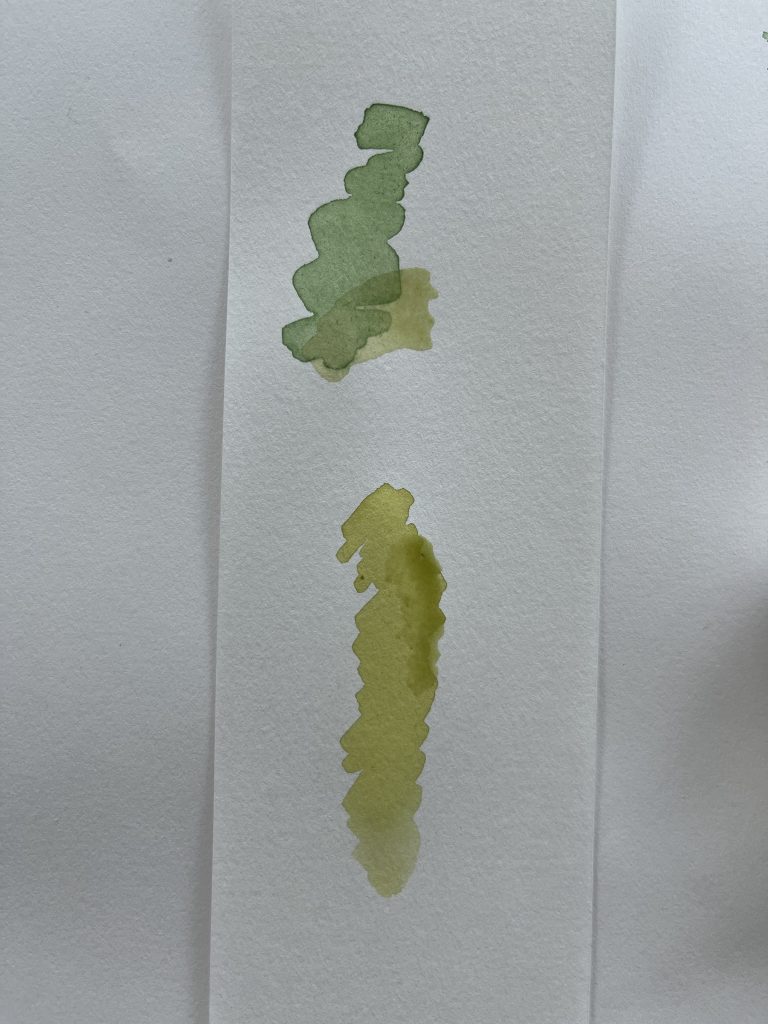
Above pure iris green and below with some saffron.
Sources:
De Arte Illuminandi 14th century
Bologne Manuscript 14th /15th century
Both give a quite detailed description for preparing iris green.
A recent book of recipes, including that of iris green is; ‘Alchimie de L’enluminure’ by Marc Niederhauser.
For the recipe, we need lye made from wood ash, but how do you make it?
Here is a brief description of how to make it. In a subsequent post, I will go into a bit more detail on the use of lye in making colours and paints.
- Take wood ash from the fireplace and strain it.
- Put it in a coffee filter with filter paper.
- Pour boiling water over it.



